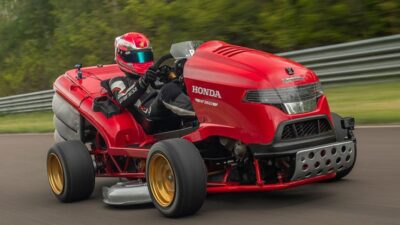The roar of two-stroke engines once dominated racetracks around the world, but by the early 2000s, these lightweight powerhouses had nearly vanished from competitive racing. Environmental regulations and the rise of four-stroke technology pushed two-strokes to the sidelines, leaving many fans wondering if they would ever return to their former glory.

Two-stroke racing is experiencing a remarkable comeback, with dedicated racing series, new technology, and growing enthusiasm from both veteran riders and newcomers breathing fresh life into these iconic machines. Dave Willett and others are leading efforts to create specialized two-stroke racing events that celebrate the unique characteristics these bikes offer. Modern innovations in fuel injection and electronic ignition are addressing previous limitations while maintaining the simple, accessible nature that made two-strokes beloved.
The resurgence goes beyond nostalgia. Racing organizations have established fair competition classes, manufacturers are releasing modern tributes to classic two-stroke designs, and the World Two-Stroke Championship proves these engines still have a place in competitive motorsports. This revival combines the raw performance and affordability that made two-strokes famous with updated technology that addresses modern racing demands.
Key Takeaways
- Two-stroke racing disappeared in the early 2000s due to emissions regulations and four-stroke competition but is now making a strong comeback
- Modern two-stroke technology includes fuel injection and electronic ignition while maintaining the simple, affordable design riders love
- Dedicated racing series and fair competition classes are giving two-stroke bikes new opportunities to compete against modern four-stroke machines
A New Era for Two-Stroke Racing

Major manufacturers are investing in advanced fuel injection systems and emissions-compliant technologies that make two-stroke bikes competitive again. Racing series worldwide are creating dedicated classes for these lightweight machines while the motorsport community recognizes their unique performance advantages.
What Is Driving the Rebirth?
Advanced fuel injection technology has solved many problems that once plagued two-stroke engines. KTM and Husqvarna announced transfer port fuel injection in 2018, which eliminates carburetors and provides precise control over air-fuel mixtures.
This technology also addresses emissions concerns. Modern two-stroke bikes can now meet stricter environmental standards while maintaining their power-to-weight advantages.
Key technological improvements include:
- Electronic fuel injection systems
- Advanced exhaust valve timing
- Improved combustion chamber designs
- Better oil injection systems
Weight reduction remains a major factor driving interest. Two-stroke bikes typically weigh 20-30 pounds less than comparable four-stroke models.
Maintenance costs are lower for two-stroke engines. They have fewer moving parts and require less frequent valve adjustments compared to four-stroke alternatives.
Racing teams appreciate the instant throttle response that two-stroke engines provide. This characteristic gives riders better control in technical racing situations.
Modern Racing Series and Two-Stroke Involvement
Enduro racing has embraced two-stroke technology with renewed enthusiasm. Beta’s 2026 RR Race models feature significant updates including completely redesigned engines and improved gearbox systems.
The 250 RR model now shares its crankshaft and cylinder with the 300 model. Beta increased the bore size and reduced stroke length to optimize power delivery.

Cross-country racing series have created specific two-stroke classes. These divisions allow manufacturers to showcase their latest developments in direct competition.
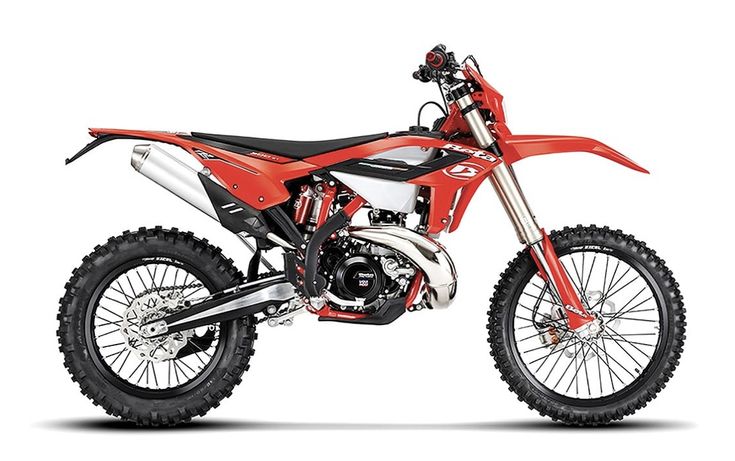
Popular racing categories featuring two-stroke bikes:
- Enduro World Championship classes
- National cross-country series
- Local trail racing events
- Vintage motocross competitions
Amateur racing has seen significant growth in two-stroke participation. Weekend warriors appreciate the simpler maintenance requirements and lower operating costs.
Professional teams are returning to two-stroke development programs. The reduced complexity allows smaller racing operations to compete more effectively.
Shifting Perceptions in Motorsport
Environmental concerns that once drove two-strokes from racing are being addressed through technology. Modern injection systems reduce fuel consumption and emissions significantly compared to older carburetor models.
Racing organizations are recognizing the entertainment value of two-stroke competition. The distinctive sound and aggressive acceleration create excitement for spectators.
Perception changes include:
- Reliability improvements through better manufacturing
- Performance advantages in specific racing conditions
- Cost benefits for privateer racing teams
- Nostalgia factor attracting older riders
Younger riders are discovering two-stroke bikes for the first time. Many find the direct power delivery and lightweight handling appealing for trail and enduro riding.
Manufacturers are responding to market demand with expanded model ranges. Companies that abandoned two-stroke development are now reconsidering their positions.
The racing community views two-strokes as a viable alternative rather than outdated technology. Modern developments have restored confidence in their long-term competitiveness.
The Unmatched Appeal of Two-Stroke Performance

Two-stroke engines deliver a unique combination of raw power, lightweight construction, and razor-sharp handling that creates an unmatched racing experience. These machines offer advantages that continue to attract both seasoned racers and newcomers to the sport.
Power-To-Weight Ratio Advantages
Two-stroke bikes dominate when it comes to power-to-weight ratio. These engines produce power on every revolution instead of every other revolution like four-strokes.
This design creates more power from a smaller, lighter engine. A 250cc two-stroke can match the power output of a 450cc four-stroke while weighing significantly less.
The weight savings come from fewer moving parts. Two-strokes don’t need valves, camshafts, or complex valve trains that add bulk to four-stroke engines.
Key Weight Differences:
- Two-stroke 250cc: 220-240 pounds
- Four-stroke 450cc: 250-270 pounds
- Power difference: Similar output with 20-30 pound advantage
This power-to-weight ratio advantage translates directly to faster acceleration and better handling. Riders can throw these bikes around corners with less effort and experience quicker response to throttle inputs.
Thrill of the Two-Stroke Powerband
The two-stroke powerband delivers a distinct riding experience that four-strokes cannot match. Power delivery comes in a sharp, aggressive burst that demands precise throttle control.
Most two-strokes hit their powerband around 6,000-8,000 RPM. When the engine reaches this range, it explodes with sudden acceleration that pushes riders forward.
This powerband characteristic creates an addictive riding experience. Riders must work harder to keep the engine in the sweet spot, making every lap more engaging.
The sound and feel of two-stroke engines creates an emotional connection that many riders describe as pure excitement. The high-pitched scream and instant throttle response deliver thrills that modern four-strokes struggle to replicate.
Experienced racers often prefer this challenge. The powerband demands better technique and rewards skilled riders who can manage the sudden power delivery effectively.
Handling and Agility on the Track
Two-stroke bikes excel in handling and agility due to their lightweight construction and compact design. The reduced weight allows for quicker direction changes and easier manipulation in tight corners.
The shorter wheelbase typical of two-strokes improves turning radius. Riders can navigate technical sections with greater precision and confidence.
Less rotating mass in the engine means faster rev response. When riders crack the throttle open, two-strokes respond instantly without the lag common in heavier four-stroke engines.
Two-stroke racing machines like the legendary Yamaha YZR 500 V4 dominated Grand Prix racing during the 1980s and 1990s partly due to their superior agility and speed.
The combination of light weight and responsive power delivery makes these bikes ideal for riders who prioritize nimble handling over straight-line stability. Track riders often find two-strokes more rewarding in technical sections where agility matters most.
The Two-Stroke Engine: Innovations and Technology

Modern two-stroke engines operate through simplified mechanics that complete power cycles in just two piston movements. Advanced expansion chambers now maximize exhaust flow dynamics while direct injection systems eliminate traditional fuel-oil mixing problems.
How a 2-Stroke Engine Works
A two-stroke engine completes a power cycle with just two piston strokes – one up and one down – during a single crankshaft revolution. This differs from four-stroke engines that need four piston movements across two crankshaft turns.
The engine combines intake and exhaust functions into these two movements. During the upward stroke, the piston compresses the fuel-air mixture while simultaneously drawing fresh mixture into the crankcase below.
On the downward power stroke, combustion forces the piston down while exhaust gases exit through ports in the cylinder wall. Fresh mixture from the crankcase enters through intake ports at nearly the same time.
Key advantages include:
- Higher power-to-weight ratio
- Simpler construction with fewer moving parts
- More power strokes per engine revolution
- Lower manufacturing costs
The simultaneous intake and exhaust process creates unique challenges. Fuel can escape through exhaust ports before combustion. This design also requires fuel-oil mixing for lubrication since the crankcase handles mixture storage rather than oil.
Expansion Chambers and Their Role
Expansion chambers transform exhaust system design from simple pipes into precision-tuned performance tools. These specially shaped chambers use pressure wave dynamics to improve engine breathing and power output.
The chamber creates negative pressure waves that travel back toward the engine at specific timing intervals. These waves arrive just as exhaust ports open, helping pull burned gases from the cylinder more efficiently.
Chamber design includes four main sections:
- Header pipe (connects to exhaust port)
- Divergent cone (expands gas flow)
- Belly section (reversal chamber)
- Convergent cone and stinger (compression zone)
The belly section reflects pressure waves back toward the engine. When timed correctly, these returning waves help push any escaped fuel mixture back into the cylinder before the exhaust port closes.
Tuning length affects peak power delivery at different RPM ranges. Shorter chambers favor higher RPMs while longer chambers optimize mid-range power. Racing teams often use multiple chamber lengths for different track conditions.
Temperature and altitude changes affect wave timing. Modern expansion chambers use computer modeling to optimize dimensions for specific engine configurations and operating conditions.
Direct Injection and Clean-Burning Technologies
Direct injection technology addresses traditional two-stroke emissions problems by injecting fuel directly into the combustion chamber after exhaust ports close. This eliminates fuel loss through exhaust ports that plagued older designs.
Modern systems inject fuel at precisely timed intervals using high-pressure injectors. The fuel enters after the exhaust port closes but before the intake port closes, preventing any escape of unburned mixture.
Advanced injection features include:
- Stratified charging – Creates fuel-rich zones near the spark plug
- Lean mixture operation – Reduces overall fuel consumption
- Variable timing – Adjusts injection timing based on load and RPM
- Multiple injection events – Splits fuel delivery for optimal combustion
These systems can run on gasoline without pre-mixing oil. Separate lubrication systems deliver metered oil directly to bearings and cylinder walls. This separation dramatically reduces hydrocarbon emissions.
Mazda recently patented supercharged two-stroke designs using compression ignition technology. These engines switch between spark ignition for high loads and compression ignition for efficiency during light loads.
Computer-controlled fuel maps adjust injection timing, duration, and pressure based on throttle position, engine temperature, and exhaust gas sensors. This precision control enables two-stroke engines to meet modern emissions standards while maintaining their power advantages.
Classic Two-Stroke Bikes and Their Legacy

Two-stroke bikes from the 1970s and 1980s created a foundation that still influences modern racing technology. These machines established design principles and performance standards that shaped motorcycle culture for decades.
Iconic Models That Defined an Era
The Yamaha RD350 earned the nickname “The Widowmaker Jr.” for good reason. Its 347cc parallel twin engine produced 39 horsepower in a lightweight frame that could reach 105 mph.
This bike terrorized larger machines on the streets. Many riders thought it was a beginner bike until they experienced its brutal powerband and aggressive handling.
The Suzuki RG500 Gamma brought Grand Prix technology to the streets between 1985 and 1987. Its 498cc square-four engine came directly from Suzuki’s race program and produced 95 horsepower.
Key specifications of legendary models:
| Model | Engine | Power | Top Speed |
|---|---|---|---|
| Yamaha RD350 | 347cc Twin | 39 HP | 105 mph |
| Suzuki RG500 | 498cc Square-Four | 95 HP | 150 mph |
| Yamaha RZ500 | 499cc V4 | 88 HP | 145 mph |
| Honda NSR250 | 249cc V-Twin | 45-55 HP | 120 mph |
The Kawasaki H2 750 Mach IV became known as “The Widowmaker” for its brutal inline-triple engine. This 748cc machine delivered 74 horsepower with handling that demanded respect from even experienced riders.
Influence on Racing and Motorcycle Culture
Two-stroke bikes dominated 250cc and 350cc road racing for nearly 40 years. The racing versions of these machines traced back to early competition models like the 1959 Yamaha YDS1.
These engines fired every revolution instead of every two revolutions like four-strokes. This created instant throttle response and incredible power-to-weight ratios that made two-stroke bikes nearly unbeatable on the track.
The lightweight design and high-revving nature of two-stroke bikes influenced modern motorcycle engineering. Racing teams developed aluminum frames, tuned exhaust systems, and advanced carburetion that later appeared on production bikes.
Two-stroke bikes created a unique culture among riders who appreciated their raw performance. The distinctive sound, smell of premix fuel, and aggressive powerband created an experience that modern four-stroke machines cannot replicate.
Emissions regulations eventually killed off two-stroke motorcycles in most markets. However, their influence on motorcycle design and racing technology continues today through advanced materials and engine management systems.
Challenges and Environmental Considerations

Two-stroke engines face significant hurdles from strict emission standards and oil combustion problems that create harmful pollutants. Modern technological advances are opening new pathways to make these engines cleaner and more sustainable for racing applications.
Emission Regulations and Their Impact
Government regulations have heavily restricted two-stroke engine use since the 1970s. The EPA implemented strict standards that made it difficult for manufacturers to meet pollution requirements.
Regulatory challenges became one of the earliest signs of trouble for two-stroke motorcycles. These engines emit significant amounts of pollutants including unburned fuel and carbon monoxide.
Racing organizations now require engines to meet specific emission thresholds. Many tracks have banned older two-stroke designs that cannot comply with current standards.
Key regulatory impacts include:
- Mandatory catalytic converters in some regions
- Fuel mixture restrictions
- Noise level limitations
- Regular emission testing requirements
Oil Combustion Issues
Two-stroke engines burn oil mixed with fuel, creating visible smoke and harmful emissions. This process releases hydrocarbons and nitrogen oxides that contribute to air pollution.
Traditional engines mix oil and gasoline before combustion occurs. This method often leads to incomplete burning and higher emission levels than four-stroke alternatives.
The oil combustion problem affects engine performance and longevity. North American two-stroke engines emit unburned fuel, oil, and carbon monoxide that harm the environment.
Modern synthetic oils help reduce some emissions. However, the fundamental design still requires oil to burn during each power cycle.
Advancements Toward Sustainable Solutions
Direct fuel injection technology offers the most promising solution for cleaner two-stroke engines. This system injects fuel directly into the combustion chamber for better control and more complete burning.
Electronic fuel injection systems provide precise fuel delivery. These systems improve combustion efficiency and reduce harmful emissions significantly.
Modern improvements include:
- Direct injection systems – Better fuel control
- Catalytic converters – Reduce harmful gases
- Cleaner fuel blends – Lower emission fuels
- Advanced materials – Lighter, more efficient designs
Manufacturers are developing alternative fuel options like ethanol blends. These cleaner-burning fuels can reduce the environmental impact while maintaining performance levels that racers demand.
The Future of Two-Stroke Bikes in Racing

Two-stroke bikes are experiencing a remarkable comeback in competitive racing, driven by their lightweight design and explosive power delivery. Modern synthetic fuel technologies are addressing environmental concerns while maintaining the raw performance that made two-stroke racing a blast from the past.
Resurgence in Off-Road and Motocross
The off-road racing scene shows strong demand for two-stroke motorcycles. Yamaha continues producing the YZ125, while manufacturers like KTM and Husqvarna maintain robust two-stroke lineups.
Current Market Leaders:
- Yamaha: YZ125, YZ250
- KTM: 125 SX, 250 SX series
- Husqvarna: TC125, TC250 models
- Beta: Updated RR Race range with complete redesign of the 250 2T engine

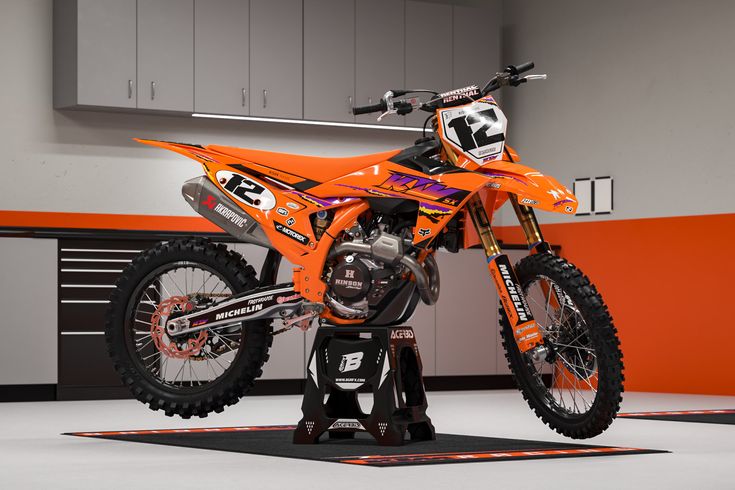
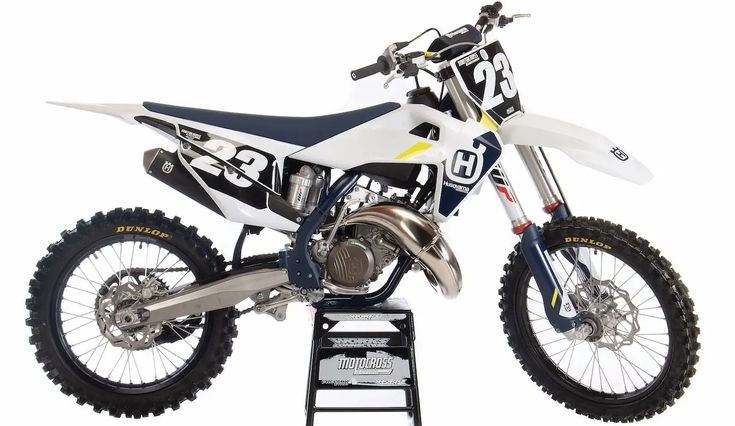
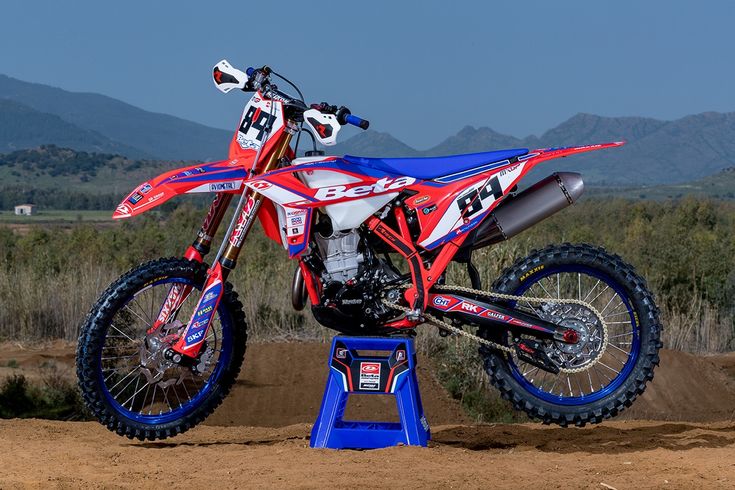
Racing preferences in motocross are shifting back toward two-stroke engines. These bikes offer instant throttle response and lighter weight compared to four-stroke alternatives.
The 2026 Yamaha YZ 125 produces approximately 40 hp at 9,000 rpm. This power-to-weight ratio gives riders significant advantages in technical sections.
Professional riders appreciate the simplicity of 2-stroke engine maintenance. Fewer moving parts mean less complexity and faster repairs between races.
Emerging Technologies and Synthetic Fuels
Synthetic fuel development addresses environmental regulations while preserving two-stroke performance. These fuels burn cleaner than traditional gasoline and reduce emissions significantly.
Major manufacturers invest in advanced 2-stroke engine technologies. Power valve systems optimize torque delivery across different RPM ranges, improving overall performance.
Modern two-stroke bikes incorporate:
- Digital fuel injection systems
- Improved combustion chamber designs
- Enhanced cooling systems
- Lightweight composite materials
Racing organizations explore separate classes for two-stroke motorcycles. This trend could establish dedicated competition categories that showcase these engines’ unique characteristics.
Boutique firms continue innovating two-stroke technology despite mainstream manufacturers previously halting development. Their work proves viable paths forward for competitive racing applications.
Electric ignition advances provide more precise timing control. This technology maximizes power output while maintaining the characteristic two-stroke sound that enthusiasts demand.
Frequently Asked Questions

Modern two-stroke engines have evolved dramatically from their predecessors through direct injection systems and advanced materials. Racing applications now feature sophisticated fuel mixing technologies and compete across multiple motorsport categories with enhanced environmental considerations.
What advancements have been made in two-stroke engine technology?
Engineers have solved many emission problems that plagued older two-stroke engines. Direct injection technology allows four-stroke-style lubrication systems with separate oil circulation instead of mixing oil with fuel.
Modern engines use compressors to improve cylinder scavenging. This prevents unburned fuel from escaping through the exhaust system.
Advanced ignition timing systems provide better control over combustion. Trapping valves retain exhaust gases to help ignite the next fuel charge.
Computer-controlled fuel injection replaces simple carburetor systems. This allows precise fuel delivery at different engine speeds and loads.
How is modern two-stroke racing different from its historical predecessor?
Today’s two-stroke racing engines feature electronic fuel injection instead of carburetors. This provides better throttle response and fuel economy compared to older models.
Modern expansion chambers use computer modeling for optimal design. Earlier systems relied on trial and error methods.
Current racing regulations often allow larger displacement two-strokes to compete against smaller four-strokes. Rules were created to remove the disadvantage of four-stroke technology in competition.
Electronic ignition systems replace mechanical points and condensers. This improves reliability and allows precise timing adjustments.
What environmental impacts are considered in the contemporary two-stroke racing scene?
Racing organizations now require cleaner-burning two-stroke engines in many competitions. Engines must meet specific emission standards to participate.
Synthetic fuels are being developed for racing applications. These man-made fuels reduce carbon emissions compared to traditional gasoline.
Modern lubrication systems separate oil from fuel combustion. This reduces smoke and unburned oil emissions significantly.
Racing venues implement noise restrictions that affect exhaust system design. Two-stroke engines must meet decibel limits during competition.
What are the competitive advantages of two-stroke engines in racing today?
Two-stroke engines fire once every revolution while four-strokes fire every other revolution. This provides more frequent power pulses for better acceleration.
Weight advantages remain significant in racing applications. Two-strokes require fewer moving parts than comparable four-stroke engines.
Power-to-weight ratios favor two-stroke designs for racing motorcycles. The engines produce more horsepower per pound than four-stroke alternatives.
Maintenance requirements are often simpler during race weekends. Fewer valve train components mean less complexity for racing mechanics.
How has fuel and oil technology improved for two-stroke racing engines?
Synthetic oils provide better lubrication at high temperatures. These oils resist breakdown under extreme racing conditions.
Fuel mixing ratios have become more precise with recommended mixtures of 28:1 to 33:1 depending on specific engine requirements. Traditional 32:1 ratios work well for most applications.
High-octane racing fuels prevent detonation at higher compression ratios. This allows engines to produce more power safely.
Separate oil injection systems eliminate pre-mixing requirements. These systems automatically adjust oil delivery based on engine load.
What are the main racing categories where two-stroke engines are currently dominating?
Motocross racing still features many two-stroke motorcycles in amateur classes. These engines remain popular for their lightweight characteristics.
Enduro racing allows two-stroke engines in various displacement categories. The power delivery suits technical terrain riding conditions.
Karting competitions use two-stroke engines almost exclusively. The high power-to-weight ratio provides excellent acceleration for small racing karts.
Snowmobile racing relies heavily on two-stroke technology. The engines perform well in cold weather conditions and provide strong acceleration.

